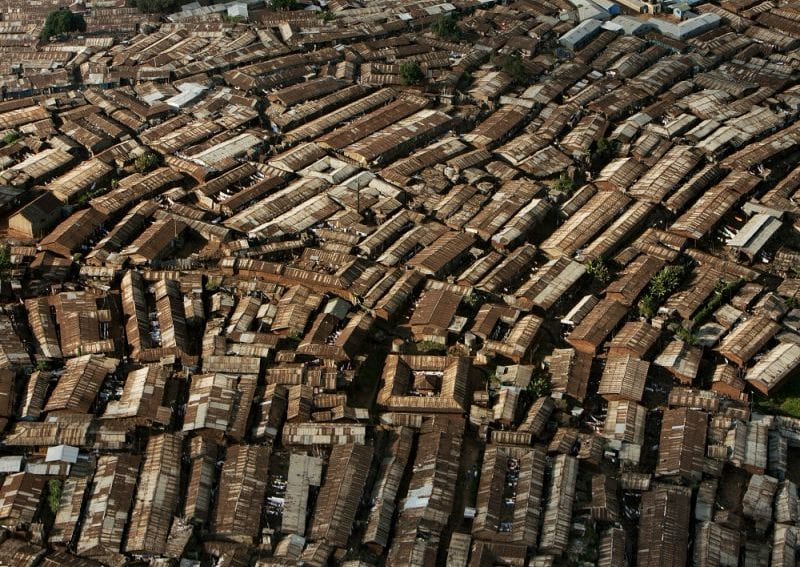By: Babar Mumtaz
Send to a friend
The details you provide on this page will not be used to send unsolicited email, and will not be sold to a 3rd party. See privacy policy.
Cheaper or new building materials don’t go far enough to tackle the housing problem in cities, says Babar Mumtaz.
In countries of the global North, urban ‘affordable housing’ means unaffordable housing subsidised by the state (formerly called social or public housing). But this cannot be the answer where public funds are scarce and are often misused.
So in the South, ‘affordable housing’ has to be what people and society can pay for — but it also has to be housing that is adequate and acceptable.
“Governments must see affordable housing as the necessary and positive force driving urban development.”
Babar Mumtaz
The question is, why does inadequate housing persist? One reason, of course, is peoples’ low incomes.
In many developing countries, even though over 80 per cent of homes are owner-occupied, low incomes mean that the houses are inadequate — as evidenced by the slums and squatter settlements that have come to define cities in the South.
So the obvious but radical answer could be to pay people a decent wage. Another answer is to revisit the terms and conditions of conventional housing finance: getting a mortgage is off limits for those without high or proven incomes who either cannot borrow, or cannot borrow enough, to buy the cheapest house on the market.
Microfinance can help with repairs or extensions, but has limited application to housing purchase. A non-conventional model for greater reach and impact might, for example, incorporate short-term, sequential loans for incremental construction, paid off with variable amounts (for example, via mobile phones) using a network of community-based retail agents.
But finance aside, what can be done, and why is it not being done?
Cheaper houses
There are two ways to make housing cheaper: by making it smaller or by using cheaper materials and methods.
Most houses in developing countries are already small (one or two rooms) and use cheap, local, often recycled materials. There have been various attempts to maximise space by clever design, the use of movable walls and even new construction technology such as interlocking blocks or 3D printing.
The US$1,000 house is one example; others include the low-cost housing developed by Worldhaus in India and flat-pack houses by IKEA or by Tata Housing in India (the Tata Nano House). These are all prototypes for small units using factory-based mass-production techniques and materials.
But in practice, these attempts don’t go far enough to solve the problem. First, the designs rarely respond to how people use domestic space. They have open-plan kitchens or only one bedroom, for example. Second, the building is only 40 per cent of the cost of housing — the rest is land, infrastructure and fees. So even halving construction costs, which is no easy matter given the minimal and often recycled materials already used, only reduces total costs by 20 per cent.
However, there is a place for technology to step into. Sanitation is one area: one of the earliest urban settlements, dating from some 5,000 years ago in Pakistan, called Mohenjo-Daro, arguably had a more effective water and sanitation system than many of today’s cities, where large numbers of households are not connected to water or sanitation systems at all. And producing standardised building components — doors and windows, but also roofing and flooring — could make these cheaper and easier to incorporate in housing.
Land cost and availability
The biggest constraint to adequate housing is land. Land adds considerably to the cost of housing, largely because a limited supply leads to speculative land holding, where investors buy land cheaply and keep it off the market until its value increases.
“Most houses in developing countries are already small (one or two rooms) and use cheap, local, often recycled materials.”
Babar Mumtaz
However, I estimate that the poorest 20 per cent of the average city’s population only occupy some two to three per cent of the total land. It is not difficult for cities to plan to provide this small amount of land at the rate and scale needed, and, if necessary, the additional cost could be covered by a one to two per cent tax on the largest plots.
This would not only make cities better accommodate diversity, but would also add much-needed life and activity to vast swathes of car-driven suburbia.
Politics and housing policy
It is possible to have affordable housing that is both acceptable and sustainable — for households and for society — but ultimately it requires a change in the way politicians and government view housing.
This is difficult for three reasons. First, politicians believe that providing housing will attract migrants, when in fact what they come for is jobs, education and to work for a better future for their children.
Second, they see the poor (and their housing) as a drain on the city’s resources rather than as contributing to its development, both as workers and producers and indeed as consumers.Third, slums and squatter settlements often act as convenient ‘vote banks’ — groups with which politicians have a client-patron relationship, getting votes in return for protection from eviction. Providing housing usually requires relocation, dissipating the vote bank or passing it on to another politician. The people also often oppose relocation, fearing loss of jobs and earning opportunities.
There can’t be affordable housing as long as it is viewed as a cost that requires rationing and the doling out of subsidised houses. Instead, governments must see affordable housing as the necessary and positive force driving urban development.
Babar Mumtaz is an international development consultant and director of UrbaNNovation with over 30 years’ experience in urban planning and housing finance. He can be reached at [email protected]
This article is part of our Spotlight on Shelter crisis: Rebuilding after the storm.














